Hybrid in a Hurricane
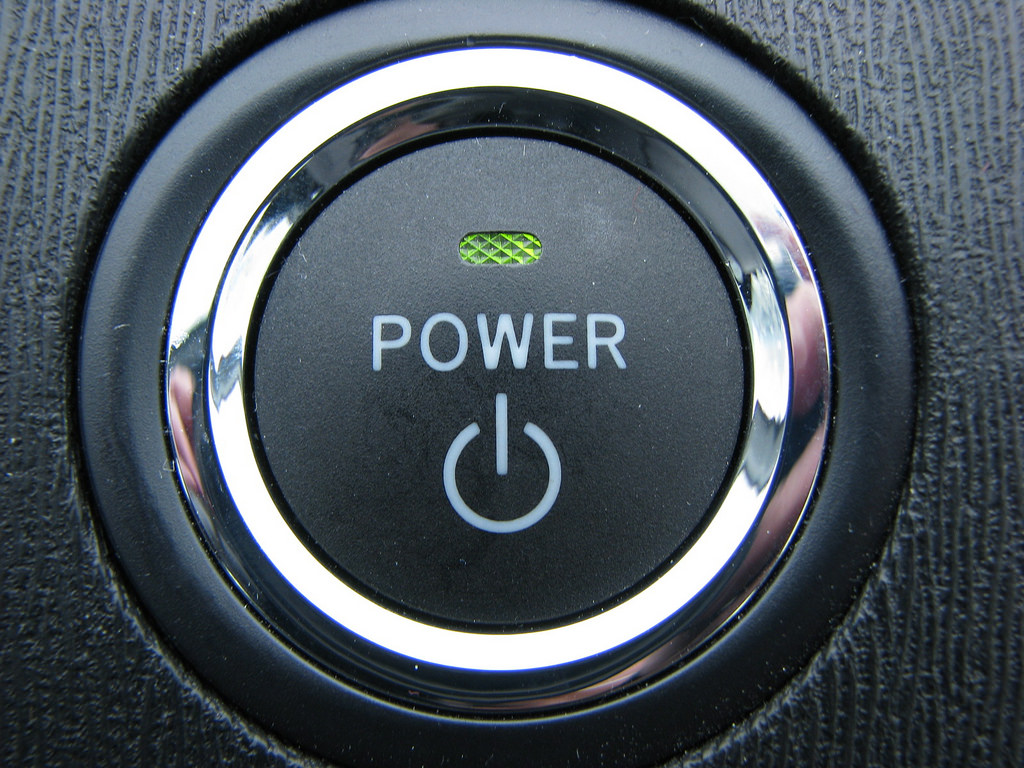 It’s an early October morning in West Seattle and storming off and on. The trees are half a dozen shades of red and orange and last night’s downpour has left the pavement soaked. The neighborhood I’m walking through is chock-full of small-town peculiarities like a shed with a bold banner that reads, “Caddyshack,” an actual phone booth in someone’s front yard, and a disproportionate number of vintage motorbikes. I’m heading up Hinds Street to rendezvous with a AAA driver at the site of my broken down 2007 Prius. Last night, the vehicle expired about a mile from home on the way back from the grocery store. So this is where we part ways, I thought when it happened. It was a long time coming.
It’s an early October morning in West Seattle and storming off and on. The trees are half a dozen shades of red and orange and last night’s downpour has left the pavement soaked. The neighborhood I’m walking through is chock-full of small-town peculiarities like a shed with a bold banner that reads, “Caddyshack,” an actual phone booth in someone’s front yard, and a disproportionate number of vintage motorbikes. I’m heading up Hinds Street to rendezvous with a AAA driver at the site of my broken down 2007 Prius. Last night, the vehicle expired about a mile from home on the way back from the grocery store. So this is where we part ways, I thought when it happened. It was a long time coming.
My Rick Steves backpack (a leftover from my traveling days) is heavy with time-killing tools including my iPhone, journal, laptop, and a book of Chekhov’s short stories. With so many welcome distractions, I’m actually looking forward to the inevitable wait for my rescuer’s arrival. As I walk, the thought of my dormant automobile sheltering me from the elements transports me back to 2012, when I lived in Huntington, Long Island.
Hurricane Sandy hit in late October of that year. Trees and telephone poles were down everywhere. We lost power for over a week; others had it much worse. During that uncertain time, my wife, our dog, and I relied on our silver Toyota Prius for news, phone charging, and warmth.
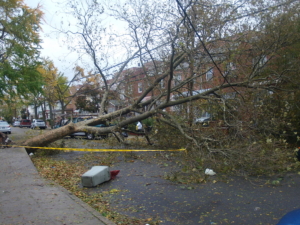 For a few days after Sandy, no one went into work. It felt like Christmas, save for the confused, shellshocked looks on my neighbors’ faces. We wandered the quaint streets of downtown, searching for stores with generators. Our local frozen yogurt shop was among the first businesses to get back on the grid, so we drove the Prius over—desktop computer in tow—to catch up on emails. In Sandy’s aftermath, I observed the longest gas lines I’d ever seen; good thing our eco-car barely needed any of the stuff. We cruised the North Shore on a mere quarter tank, powered by a patented Hybrid Synergy Drive.
For a few days after Sandy, no one went into work. It felt like Christmas, save for the confused, shellshocked looks on my neighbors’ faces. We wandered the quaint streets of downtown, searching for stores with generators. Our local frozen yogurt shop was among the first businesses to get back on the grid, so we drove the Prius over—desktop computer in tow—to catch up on emails. In Sandy’s aftermath, I observed the longest gas lines I’d ever seen; good thing our eco-car barely needed any of the stuff. We cruised the North Shore on a mere quarter tank, powered by a patented Hybrid Synergy Drive.
As I walk, memories of the hurricane work at me on both sensory and emotional levels. I recall the bleak, calm atmosphere, a weary acceptance of life’s inconveniences, and the feeling of time stilled. Through the haze of nostalgia, the idea of us hardy townsfolk coming together in the wake of a nor’easter is comforting, cozy even.
The incline steepens, and I see my car far up the approaching hill, right across from the red brick middle school. I know it’s mine because the paint on the front bumper is almost entirely gone. It happened in Oregon on the last leg of one of my low budget tours as a singer-songwriter. I was working my way home to Southern California. 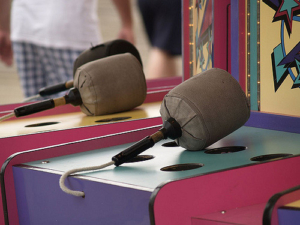 The other car was at fault and we settled outside of insurance. I spent the money, promising myself I’d get the bumper cleaned up. Years passed. There never seemed enough money to fix it properly. Life was a game of whack-a-mole at that time: I’d pay one bill, and two more would pop up in its place.
The other car was at fault and we settled outside of insurance. I spent the money, promising myself I’d get the bumper cleaned up. Years passed. There never seemed enough money to fix it properly. Life was a game of whack-a-mole at that time: I’d pay one bill, and two more would pop up in its place.
Up ahead, I see a white repair truck barreling down the hill, passing the Prius. That’s my guy. It’s gotta be. My fantasy of uninterrupted reading time evaporates. Walking in a diagonal line across the street, I wave to the driver. I’m not sure he sees me so I half-jog over. He turns the truck around. By the time I make it up the hill his vehicle is tail to tail with mine, in proper repair position. I accept whatever the fates have in store for my Prius.
His name tag reads Ryan, and he leans over my car’s open trunk. “Some of the guys don’t like working on these, but I don’t mind. You’ve got the hatchback for cover if it’s raining. It’s not bad.”
“I was pretty sure it was the end of this thing,” I tell him. “I mean, it’s got 196,000 miles on it. Everyone used to say when these batteries died they were unbelievably expensive.”
Ryan is happy to talk shop. He also understands that my sole point of automotive reference is this one vehicle. “You’re lucky. The nickel metal hybrid battery isn’t dead. It’s the 12v,” he says. “They are pretty pricey, though. About two hundred bucks.”
“That’s nothing,” I say, laughing. “My wife and I were touring musicians. We crossed the country four times in this car.” I don’t tell him the Prius was like our second home and when it died last night, we worried that was it. A few hundred dollars for a replacement battery is actually a huge relief.
I watch Ryan as he works. He doesn’t know I am transforming him into a character, that I notice how high his buzz cut goes in the back, his circulation socks, the fact that he is beltless. Ryan lifts my old battery and places it on the steel bed of his gleaming truck, leaving behind a socket inside the trunk.
It turns out Ryan lives down south, past Olympia. He gets up at 3 a.m. to make it to the auto shop where he works in Magnolia. That’s over an hour and a half commute, I figure. He owns a house down there, an acre and a quarter. Got it for a hundred thousand ten years back. Friends are always telling him he should sell his home and move closer to work. Ryan says in this housing market, that would barely equal a down payment on a place. I understand. For years, the Prius’s steep monthly cost felt like a mortgage, especially considering all the hours I spent in the car.
There are hundreds of thin scratches near the gas cap, each one the result of leaning my heavy guitar case against the car’s shell. In this light, they look like scars. From a distance, the close groupings of lines act as cross-hatching, shading the back panel of the automobile. A decade ago, when this car was brand new, the novelty of owning a hybrid was a real conversation starter. My friend’s son called my then-futuristic vehicle a “button car,” though, to be fair, vehicles as far back as the ‘46 Dodge employed similar technology.
I never had much foresight when it came to big life purchases. Like so many Angelenos, I leased the Prius at first, a disastrous idea. I overshot the allotted mileage and the dealership backed me into a Faustian payoff agreement. Over the years, as the car became increasingly rugged looking, people started telling me touring in a hybrid was cool. And green to boot. I began to take pride in my small musical footprint. Grab the acoustic guitar, get in the Prius, and go.
It turns out Ryan is a conscientious repair guy. He urges me to “take the car for a spin around the block” to make sure the new battery is working.
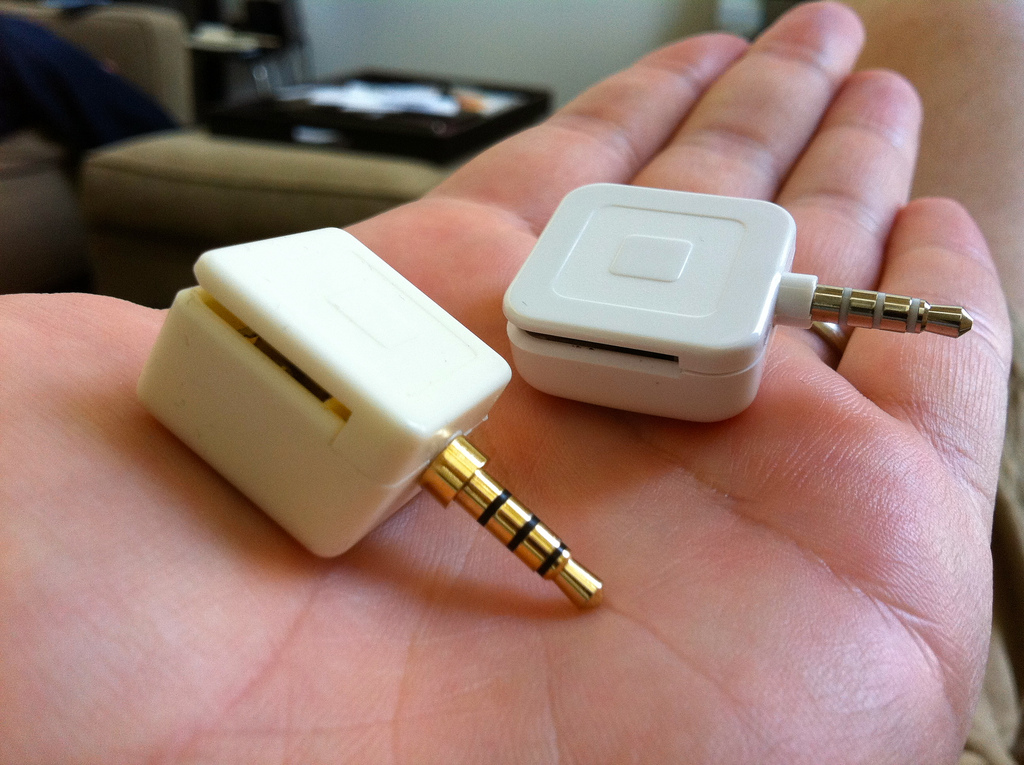 Last night, my wife and I stayed up until two researching new cars. Certain we’d have to purchase one before work on Monday, we tried to accept this unexpected financial hardship. I couldn’t imagine our Prius rising again, like Lazarus, for another chapter. But today, in routine Cascadian showers, I rediscover my old touring companion. I reset the clock and the radio stations—both wiped back to their defaults by the recharge—and fall in love all over again.
Last night, my wife and I stayed up until two researching new cars. Certain we’d have to purchase one before work on Monday, we tried to accept this unexpected financial hardship. I couldn’t imagine our Prius rising again, like Lazarus, for another chapter. But today, in routine Cascadian showers, I rediscover my old touring companion. I reset the clock and the radio stations—both wiped back to their defaults by the recharge—and fall in love all over again.
Square readers didn’t exist when I bought the Prius in 2006. After I sign with my finger, Ryan hands me the receipt and a survey. He says if I want I can tell his boss he “hooked me up.” My car gleams in a brief sun break. Maybe I’ll just do that.
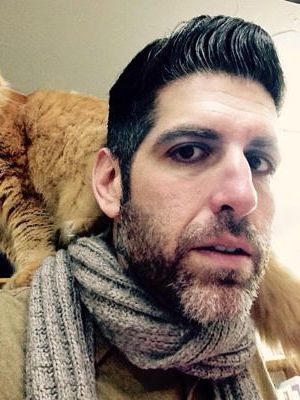
Ari Rosenschein is a Seattle-based writer whose work appears in Stratus, The Observer, PopMatters, The Big Takeover, From Sac and elsewhere. Ari earned a BA in Theater Arts from UC Santa Cruz and recently completed the University of Washington’s nonfiction writing certificate program. He is currently working towards his MFA at Antioch University Los Angeles. A lifelong musician, Ari has released albums as a solo artist and as a member of The Royal Oui. He lives with his wife and their dog Arlo.





